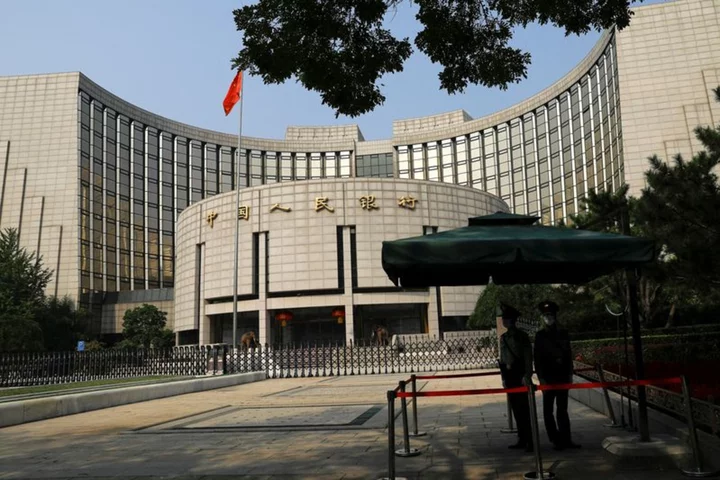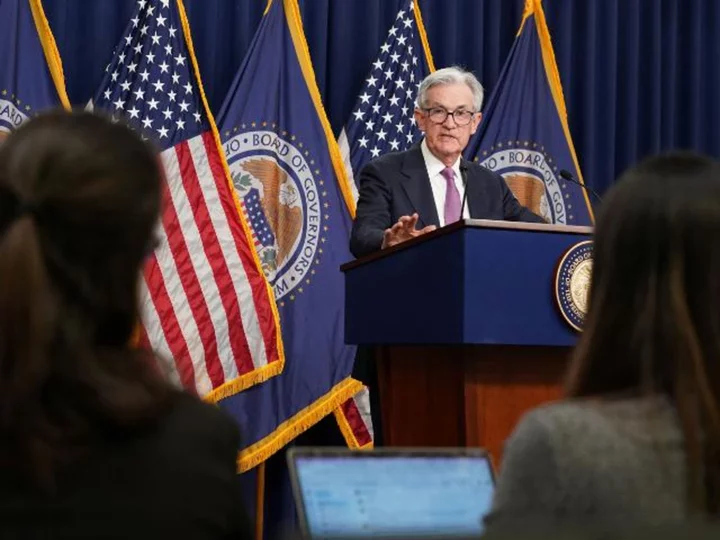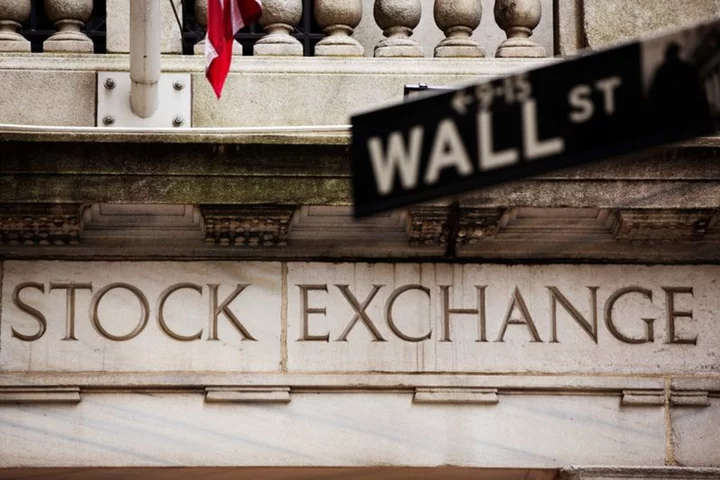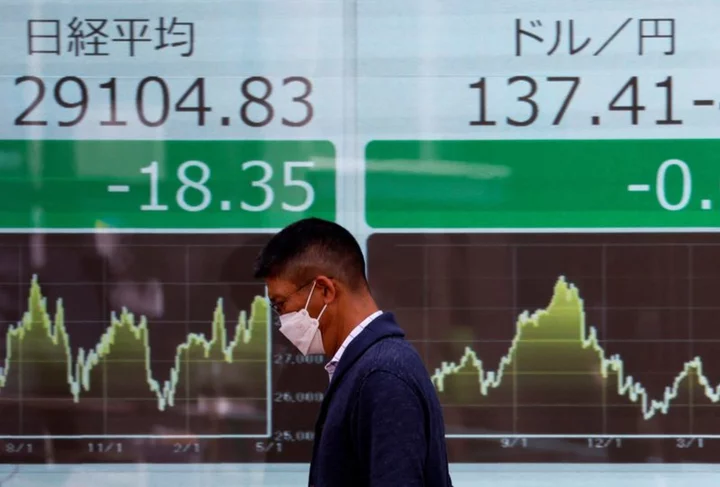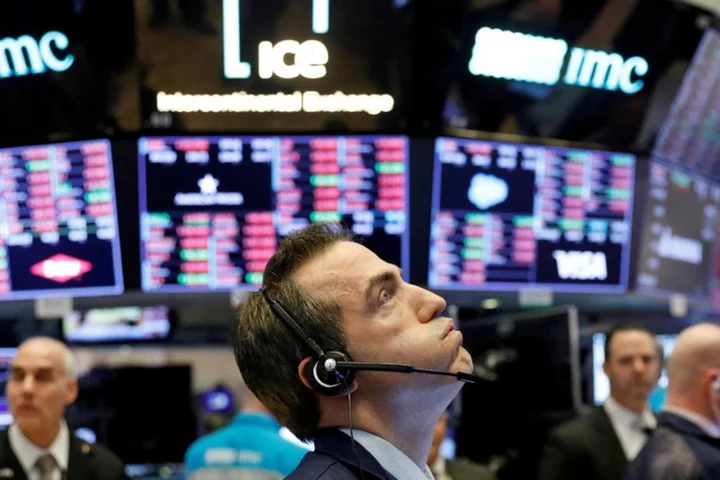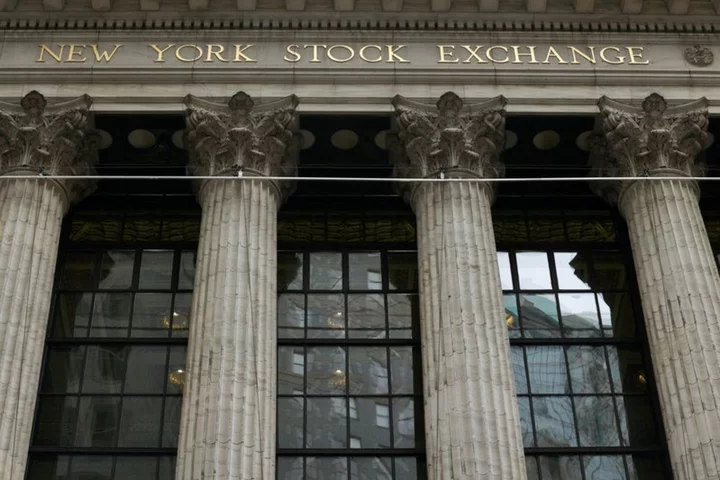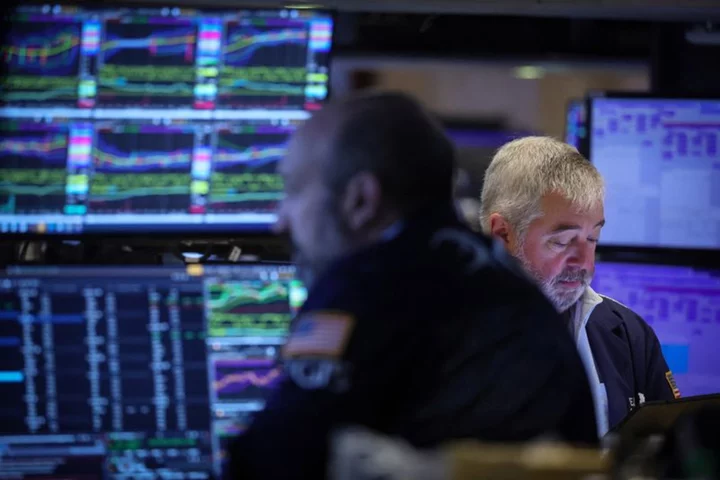It's been a turbulent week or two for markets, with one central bank after another making it very clear the only way for rates right now is up as inflation tightens its grip on the global economy.
Investors will get a look at the state of China's manufacturing juggernaut, as well as the Federal Reserve's favoured measure of inflation, while the world's central bankers gather in Portugal for an annual forum.
Here's a look at the week ahead in markets from Rae Wee in Singapore, Yoruk Bahceli in Amsterdam, Lewis Krauskopf in New York, and Naomi Rovnick and Amanda Cooper in London.
1\FROM ZEROS TO HEROES
What a year. It started with a burst of optimism over China's post-COVID recovery, greater resilience in the global economy and relief that inflation could have peaked.
Since then, a U.S. banking crisis, the collapse of Credit Suisse, and a painful reckoning over the rate outlook has made the last six months feel like a long time in markets.
The hype around AI has made Big Tech the best performing asset of 2023, with a gain of 75%. At the end of H2 2022, that sector was showing a 10% loss.
But it's been pretty unkind to the rest of the market, other than specific pockets such as Japanese equities and European luxury stocks.
Surprisingly, considering the turmoil in the sector, the only asset to even come close to Big Tech's returns is bitcoin, with a gain of 73% compared with a 20% loss in H2 2022.
Halfway through 2023 and last year's zeros appear to be turning into this year's heroes.
2\HIGH HOPES
China's June factory activity data takes centre stage on Friday, though if anything, the figures will add to the narrative of a faltering recovery.
Beijing seems to be in no hurry to unleash massive stimulus so far and is instead drip-feeding it, first by cutting medium-term loan rates, then by lowering its key lending benchmarks.
Bad news could be taken as a positive, if traders see it as a way of pushing authorities to offer more support to the economy - as long as it eventually arrives.
But if hopes are running high, patience is wearing thin. Most economists have cut their growth forecasts as the prospect of GDP adding more than 6% fades away.
3\DATA DELUGE
The U.S. economy has proved to be surprisingly resilient in the first half of this year, despite a barrage of interest rate hikes, but just how resilient will become clearer with a fresh batch of data due in the coming week.
The latest consumer confidence report arrives on Tuesday after the measure slipped to a six-month low in May. June's index is expected to tick higher.
A window into the housing market also comes on Tuesday with the Case-Shiller national home price index. The index climbed 0.4% in March after adjusting for seasonal fluctuations.
The week ends with the May personal consumption expenditures (PCE) price index on Friday, a key inflation gauge. In the 12 months through April, the PCE price index increased 4.4%.
The Federal Reserve tracks the PCE price indexes for its 2% inflation target, and the data will feed into the central bank's next rate decision in July after it left rates unchanged at its June meeting.
4\ET TU, CHRISTINE?
Looking to quiz the world's leading central bank bosses? Make your way to the foothills of Portugal's Sintra mountains from Monday through Wednesday.
The agenda is, of course, inflation, inflation, inflation.
All eyes will be on European Central Bank chief Christine Lagarde for clues on what rates-setters for the euro zone's 20 economies will do next, after she sounded more hawkish than expected at the most recent policy meeting.
The bank's governors have been vying for the limelight since, to drive home the message that the fight against inflation is far from over. Even Greek governor Yannis Stournaras, a dove, has said he can't rule anything out.
Traders have jacked up their bets on how much further the ECB will go. They are betting on a July increase and expect another move by October that would bring rates to 4%.
5\THE PROBLEM WITH SWEDEN
Sweden's central bank, which meets on June 28, is dealing with too-high inflation exacerbated by a weakened currency, making an interest rate rise and continued hawkishness seem the best course of action.
But the Riksbank has another big problem on its hands, as higher rates and falling property values squeeze Sweden's indebted real estate market. Sweden's banks are heavily exposed to the property sector too.
The currency, rates and property are, therefore, in a potential doom loop, with the Swedish crown now around its weakest against the euro on record because of concerns about the effect of real estate woes on the economy.
Analysts are looking at what options the Swedish central bank has, beyond rate rises, to strengthen the crown. Many expect initial attempts to talk the currency higher - "jawboning", in central bank jargon - before considering whether direct intervention is needed.
(Compiled by Amanda Cooper; Editing by Jan Harvey)

